Salt is one of those ingredients we reach for without thinking-but it’s doing way more than just making your food salty. Whether you’re boiling pasta, baking bread, or finishing off a juicy steak, salt plays a big role in how your food tastes. And here’s the thing: not all salts are created equal. There’s a whole world of salt out there, each with its own texture, flavor, and best use. From the super-fine table salt in your shaker to gourmet finishing salts like fleur de sel or Himalayan pink, choosing the right kind can actually change the way your dish turns out. In this guide, we’ll break down the most popular types of cooking salt, what makes each one special, and when to use them.
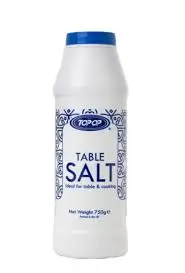
1. Table Salt
Table salt is the most commonly used salt in households, characterized by its fine granules and high purity. It is typically mined from underground salt deposits and undergoes extensive processing to eliminate minerals and impurities. Anti-caking agents are added to prevent clumping, and it is often iodized to help prevent iodine deficiency. Due to its fine texture, table salt dissolves quickly, making it suitable for baking and general cooking.However, some chefs avoid table salt in gourmet cooking because its additives can affect flavor and texture. It’s the most accessible and affordable type of salt and remains a kitchen staple around the world. Despite its basic reputation, it plays a vital role in preserving food, baking, and daily seasoning.
Peculiarities:
- Fine-grained and highly refined.
- Often iodized and contains anti-caking agents.
- Easily dissolves, ideal for consistent seasoning.
To Whom and Why:
- Recommended for everyday home cooking and baking.
- Essential for people at risk of iodine deficiency.
- Best for those seeking an affordable, all-purpose salt.

2. Sea Salt
Sea salt is produced through the evaporation of seawater and varies widely in texture, mineral content, and flavor depending on its source. It is less refined than table salt, meaning it retains trace minerals like magnesium, calcium, and potassium. These minerals give it a more complex flavor and natural appeal. Sea salt comes in various grain sizes, from fine to coarse, making it suitable for both cooking and finishing. While not always iodized, many people choose it for its perceived naturalness and taste profile. The quality and price of sea salt can vary significantly, with artisanal versions often commanding premium prices. It’s widely favored in health-conscious and gourmet kitchens alike.
Peculiarities:
- Naturally evaporated and less processed than table salt.
- Retains trace minerals, influencing taste and color.
- Comes in various textures and coarseness levels.
To Whom and Why:
- Ideal for those seeking a more natural, mineral-rich alternative to refined salt.
- Popular with health-conscious consumers.
- Used by chefs for flavor layering and finishing dishes.
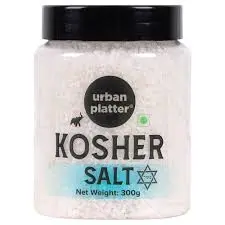
3. Kosher Salt
Kosher salt gets its name from its use in the koshering process of drawing blood from meat, as prescribed by Jewish dietary laws. It has large, irregular flakes that are easy to handle and pinch, making it a favorite among professional chefs. Kosher salt is often free of additives, though some brands may include anti-caking agents, although some brands include anti-caking agents. It dissolves slower than table salt, offering more control during seasoning. Because of its texture, it sticks well to food surfaces, which makes it ideal for dry brining and curing meats. Despite its name, not all kosher salt is certified kosher, so consumers should check the label if that’s a concern.
Peculiarities:
- Large, flaky crystals for easy pinching and distribution.
- Typically additive-free with a clean flavor.
- Dissolves slowly, offering precision in seasoning.
To Whom and Why:
- Loved by chefs for seasoning control during cooking.
- Perfect for dry brining and koshering meat.
- Recommended for home cooks seeking an easy-to-use, clean-tasting salt.
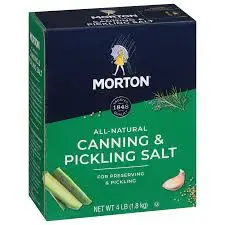
4. Pickling Salt
Pickling salt, also known as canning salt, is a pure form of sodium chloride without any additives like iodine or anti-caking agents. Its fine-grained texture allows it to dissolve quickly in water, making it ideal for creating clear brines used in pickling and preserving foods. Unlike table salt, pickling salt ensures that the brine remains free from cloudiness, which can occur due to additives in other salts. This purity is essential for maintaining the desired appearance and texture of pickled products. Additionally, its fine grains adhere well to food surfaces, making it suitable for seasoning snacks like popcorn. However, due to its lack of anti-caking agents, pickling salt can clump in humid conditions, so it should be stored in airtight containers. Its straightforward composition makes it a versatile choice for various culinary applications beyond pickling.
Peculiarities:
- Fine-grained, allowing for quick dissolution in liquids.
- Free from additives, ensuring purity and preventing brine cloudiness.
- Adheres well to food surfaces, suitable for seasoning.
To Whom and Why:
- Essential for home canners aiming for clear, additive-free pickles.
- Ideal for those seeking pure salt for brining meats or fermenting vegetables.
- Suitable for individuals preferring salt without additives for general cooking.

5. Celtic Sea Salt
Celtic sea salt, often referred to as “gray salt,” is harvested from the coastal regions of France using traditional methods that involve sun-drying and hand-raking. This process retains the salt’s natural moisture and mineral content, including magnesium, potassium, and calcium. The presence of these trace minerals gives Celtic sea salt its characteristic grayish hue and a complex, briny flavor profile. Unlike refined table salt, it undergoes minimal processing to preserve its natural state. The moist texture of Celtic sea salt makes it suitable for finishing dishes, where it can enhance flavors without overpowering them. Its mineral-rich composition has led some to believe in its potential health benefits, although these claims lack substantial scientific backing. Nevertheless, its unique taste and texture have made it a favorite among chefs and culinary enthusiasts.
Peculiarities:
- Moist, coarse crystals with a grayish color due to mineral content.
- Rich in trace minerals like magnesium, potassium, and calcium.
- Unrefined and harvested using traditional methods.
To Whom and Why:
- Preferred by chefs for finishing dishes to add texture and flavor complexity.
- Chosen by individuals seeking natural, unprocessed salt options.
- Suitable for those interested in salts with trace mineral content.
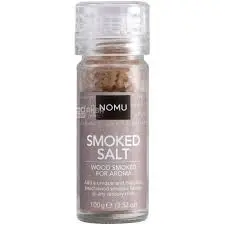
6. Smoked Salt
Smoked salt is a culinary salt that has been infused with smoke from burning wood, imparting a distinctive smoky flavor and aroma. The smoking process involves exposing salt crystals to smoke from various types of wood, such as oak, applewood, or hickory, over an extended period. This technique not only adds depth to the salt’s flavor but also enhances its visual appeal with subtle color changes. Smoked salt is commonly used as a finishing salt, sprinkled over dishes to provide a smoky essence without the need for actual smoking or grilling. It’s particularly popular in vegetarian and vegan cooking, where it can mimic the flavor of smoked meats. The intensity of the smoky flavor can vary depending on the type of wood used and the duration of the smoking process. Its versatility makes it a valuable addition to various dishes, from roasted vegetables to grilled meats.
Peculiarities:
- Infused with natural smoke from woods like oak, applewood, or hickory.
- Offers a smoky aroma and flavor without artificial additives.
- Available in various grain sizes, suitable for different culinary applications.
To Whom and Why:
- Ideal for chefs and home cooks aiming to add smoky flavor without grilling.
- Popular among vegetarians and vegans to replicate smoked meat flavors.
- Suitable for enhancing the taste of roasted vegetables, meats, and even cocktails.
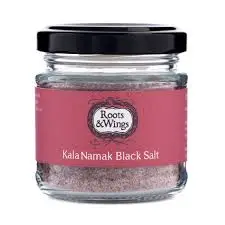
7. Black Salt (Kala Namak)
Black salt, or Kala Namak, is a volcanic rock salt commonly used in South Asian cuisine. Despite its name, it has a pinkish-brown hue and is known for its distinctive sulfurous aroma, reminiscent of hard-boiled eggs. This unique flavor profile is due to its high sulfur content, which also contributes to its therapeutic properties in traditional Ayurvedic medicine. Black salt is often used in dishes like chaats, chutneys, and raitas, as well as in vegan cooking to impart an egg-like flavor to dishes such as tofu scrambles. It’s also believed to aid digestion and alleviate bloating. The salt is typically mined in regions surrounding the Himalayas and undergoes a process of heating and aging to develop its characteristic taste and color. Its pungent flavor means it should be used sparingly to avoid overpowering dishes.
Peculiarities:
- Contains sulfur compounds, giving it an egg-like aroma and taste.
- Pinkish-brown color resulting from its mineral content and processing.
- Used in traditional medicine for its supposed digestive benefits.
To Whom and Why:
- Essential in South Asian cuisines for authentic flavor profiles.
- Favored by vegans to mimic egg flavor in plant-based dishes.

8. Rock Salt
Rock salt, also known as halite, is a naturally occurring mineral form of sodium chloride. It is typically extracted from underground salt mines and is characterized by its large, chunky crystals. Due to its coarse texture and potential impurities, rock salt is often used in coarse form or ground for seasoning food. Instead, it finds its place in various culinary and non-culinary applications. In the kitchen, rock salt is commonly used in ice cream makers to lower the freezing point of ice, facilitating the freezing process. It is also employed in salt-crust baking, where it encases food items like fish or poultry, creating a seal that retains moisture and imparts a subtle saltiness. Beyond cooking, rock salt serves purposes such as de-icing roads and water softening. Its versatility makes it a valuable resource, though it’s essential to ensure food-grade quality when used in culinary contexts.
Peculiarities:
- Large, coarse crystals often containing natural impurities.
- Typically not refined, resulting in a less uniform composition.
- Primarily used for non-seasoning purposes in culinary settings.
To Whom and Why:
- Ideal for culinary professionals utilizing traditional ice cream makers.
- Suitable for chefs practicing salt-crust baking techniques.
- Valuable for individuals seeking natural methods for de-icing or water softening.
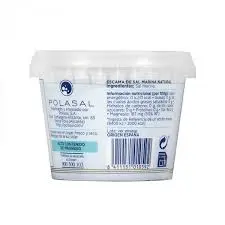
9. Flake Salt
Flake salt is distinguished by its thin, flat crystals that offer a light, crunchy texture. Produced through various methods, including boiling brine or solar evaporation, flake salt dissolves quickly and evenly, making it a favorite among chefs for finishing dishes. Its delicate structure allows it to adhere well to food surfaces, enhancing flavor without overwhelming the palate. Flake salt is often used to add a visual and textural appeal to dishes, from salads to desserts. Its clean, pure taste makes it versatile across various cuisines. Due to its low moisture content, it has a longer shelf life and resists clumping. Flake salt’s unique properties make it a staple in both professional kitchens and home cooking.
Peculiarities :
- Thin, flat crystals that provide a crisp texture.
- Quick-dissolving, ensuring even seasoning.
- Low moisture content, enhancing shelf stability.
To Whom and Why:
- Preferred by chefs for finishing dishes with a delicate crunch.
- Ideal for home cooks seeking to elevate the presentation of meals.
- Suitable for those desiring a pure, clean salt flavor.
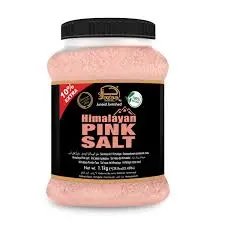
10. Himalayan Pink Salt
Himalayan pink salt is mined from ancient sea salt deposits in the Khewra Salt Mine in Pakistan. Its distinctive pink hue comes from trace minerals like iron, magnesium, and calcium. This salt is often valued for its mineral content, though the health benefits are comparable to other salts. Himalayan pink salt is available in various forms, including fine grains for seasoning and large blocks used for cooking or serving. Its subtle flavor makes it suitable for a wide range of dishes, and its aesthetic appeal adds a decorative touch to culinary presentations. While it lacks added iodine, it serves as a natural alternative to table salt. Its versatility extends beyond the kitchen, finding use in spa treatments and decorative lamps.
Peculiarities:
- Distinctive pink color due to mineral content.
- Available in various grain sizes and forms.
- Mild flavor suitable for diverse culinary applications.
To Whom and Why:
- Ideal for individuals seeking natural, unrefined salt options.
- Suitable for those interested in culinary aesthetics and presentation.
- Valuable for consumers looking for versatile salt for both cooking and decorative purposes.
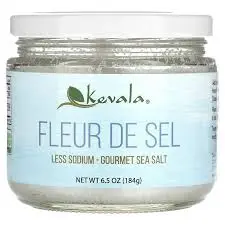
11. Fleur de Sel
Fleur de sel, meaning “flower of salt” in French, is a delicate sea salt harvested by hand from the surface of salt ponds, primarily in coastal regions of France. It forms as a thin crust on the water’s surface under specific weather conditions and is carefully collected to preserve its unique crystal structure. Fleur de sel is prized for its subtle, complex flavor and moist texture, which enhances the taste of dishes without overpowering them. Due to its labor-intensive harvesting process and limited availability, it is considered a gourmet finishing salt. Commonly used to garnish meats, vegetables, and even desserts, fleur de sel adds both flavor and a touch of elegance to culinary creations. Its high mineral content contributes to its distinctive taste and slightly off-white color. As a finishing salt, it is typically sprinkled on dishes just before serving to maximize its sensory impact.
Peculiarities:
- Delicate, moist crystals with a complex flavor profile.
- High mineral content, including magnesium and calcium.
- Harvested under specific conditions, resulting in limited supply.
To Whom and Why:
- Ideal for gourmet chefs aiming to enhance dishes with a premium finishing salt.
- Suitable for food enthusiasts seeking to elevate the flavor and presentation of meals.
- Valuable for individuals appreciating artisanal, hand-harvested ingredients.
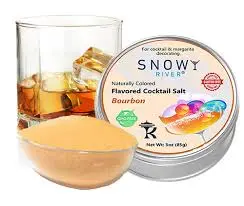
12. Flavored Salts
Flavored salts are specialty salts that have been infused or blended with herbs, spices, dehydrated ingredients, or even oils to impart additional taste and aroma. These salts typically begin with a base-often sea salt, kosher salt, or Himalayan pink salt-which is then mixed with flavor agents like garlic, chili, lemon zest, truffle, or herbs such as rosemary and thyme. Some are also infused with wine, citrus, or coffee. The process enhances the salt’s sensory impact, making it a powerful finishing touch for both savory and sweet dishes. Flavored salts are particularly popular in gourmet kitchens, where they’re used to complement or elevate the taste of specific ingredients. They’re also an excellent way to introduce complexity to a dish with minimal effort, and can be homemade or purchased from artisanal producers. While they are not a daily use salt, they offer a unique flair for special dishes or occasions.
Peculiarities:
- Created by infusing salt with spices, herbs, or other flavoring agents.
- Available in a wide variety of blends (e.g., truffle salt, lemon salt, garlic salt).
- Best used as a finishing salt to preserve its aromatic properties.
To Whom and Why:
- Ideal for gourmet cooks looking to add bold, specific flavors without additional seasoning steps.
- Great for home cooks who want to enhance presentation and taste quickly.
- Recommended for use on grilled meats, roasted vegetables, popcorn, chocolates, and cocktails (like margaritas with chili salt rims).
Conclusion
At first glance, salt might seem like the most basic ingredient in your kitchen-but as we’ve explored, there’s a whole spectrum of flavors, textures, and uses hiding in those tiny crystals. Each type of salt brings something different to the table-literally.
Table salt is great for everyday cooking and baking, offering precision and consistency. Kosher salt gives you control with its pinchable flakes and clean flavor, making it a go-to for professional chefs. Want to boost presentation and texture? Reach for flake salt or the luxurious fleur de sel, perfect for finishing dishes with a delicate crunch. Looking for something earthy and mineral-rich? Try Himalayan pink salt or Celtic sea salt. Craving something bold and smoky? A touch of smoked salt can totally transform grilled meats or roasted veggies. And for adventurous cooks, flavored salts open a door to creativity.
The beauty of salt is that it doesn’t just season-it enhances. It brings balance to bitter notes, amplifies sweetness, and unlocks complex flavors. But different salts also bring personality. Some are bold, others subtle. Some dissolve in an instant, others leave a satisfying crunch. Choosing the right one can elevate your cooking from good to unforgettable.
FAQ:
1. What is the difference between table salt and sea salt?
Table salt is highly refined, fine-grained, and often contains additives like iodine or anti-caking agents, making it ideal for consistent seasoning and baking. Sea salt is less processed, retains trace minerals, and varies in texture and flavor, often used for finishing dishes or in health-conscious cooking.
2. Why is kosher salt preferred by chefs?
Kosher salt has large, flaky crystals that are easy to pinch and distribute, offering precise control during seasoning. Its clean flavor and additive-free nature make it a favorite for cooking, dry brining, and curing meats.
3. Can I use Himalayan pink salt for everyday cooking?
Yes, Himalayan pink salt can be used for everyday cooking due to its mild flavor and versatility. It’s available in fine grains for seasoning and coarser forms for finishing, though it’s pricier than table salt.
4. What makes fleur de sel so special?
Fleur de sel is a hand-harvested sea salt with delicate, moist crystals and a complex flavor due to its high mineral content. Its labor-intensive production makes it a premium finishing salt, perfect for enhancing dishes just before serving.
5. Is pickling salt only for pickling?
No, pickling salt’s fine texture and lack of additives make it great for pickling, but it’s also suitable for brining meats, fermenting vegetables, or seasoning snacks like popcorn where a pure, clear result is desired.
6. Can I substitute one type of salt for another?
Substitution depends on the dish. For example, table salt can replace kosher salt in baking, but you’ll need to adjust quantities due to differences in grain size. For finishing, flake or fleur de sel is better than table salt for texture and flavo

Leave a Reply